This is the fourth installment of my tutorial on scratch building tanks.
So far we’ve built the core model from 110 lb card stock and recycled card board. We continued adding detail with these materials, and started adding rivets.
I’ve been following a template for an Imperial Hellhound, which I will be using to create a Devil Dog for my Rebel Grots. The template was written by Eli Patoroch. I don’t know anything about him but he’s created a ton of excellent papercraft templates.
Disclosure: Some of the links below are affiliate links, meaning, at no additional cost to you, I will earn a commission if you click through and make a purchase. The commission earned helps maintain this site.
In this installment I will start adding details using styrene rod, styrene sheet (plasticard), and other materials.
I had hoped to talk about tank tracks, but I haven’t made a lot of progress on those, so we’ll look at some other details instead.
Where We Left Off
Here’s where we were at the end of the last installment:
At this stage it’s looking quite a bit like a proper tank. You can finish this using the paper template and have a decent looking model. However, there are limits to what I can pull off with paper.
Fuel Lines
I’ve already discussed adding rivets using silica pellets from a desiccant pack. Next I want to plumb the tanks.
The template provides some very flat looking paper plumbing, but I’m going with some wire instead. I start by drilling some holes where the pipes will connect.
The picture is a little blurry, but you should be able to see that I’ve drilled holes in the top of two tanks, and into one of the inlets.
For piping I am using a piece of wire tie from a toy package. If you happen to have a daughter, or niece, buy her a Barbie some time and you’ll find a couple feet of this stuff. It’s basically a piece of wire coated in plastic. If you don’t have need to buy many toys, you can also use some solid core wire from Radio Shack.
First, I took a piece of styrene tube that is just large enough to slide the wire into. I cut a small length to represent the coupling where the pipes come together. Then I slid this piece over the wire, and I lined up the bends and cut the ends a bit longer than I want them.
The holes I drilled are about the size of the inner wire. So, I strip the coating from the ends before adding superglue, and pushing them into place to create the pipe connecting the rear tank to the valve.
With this glued in, I added a small amount of superglue to the wire where the pipe from the front tank will attach. I slid the piece of tube over the glue.
I added a small piece of the wire to connect the forward tank to the coupling. This piece was stripped where it enters the tank, and cut flat where it meets the coupling, and glued at both ends. Then I followed the same process to connect the other two tanks to the second valve.
Adding the Spoiler
Next, I added the armored spoiler looking piece that covers the pipes. This was included in the template.
I glued it to the cardboard, cut, scored, and glued in place.
On each side of the tank is a blank space where the GW model has an armor plate bearing winged skull and banner. I’m going to make this plate from plasticard, and add a Rebel Grot star.
Adding Some Armor Plates
The template has armor plates for this space so I start by gluing this part of the template to a piece of .030 plasticard.
I cut these out then peel the paper off the plastic.
One of the things I like about plasticard is that I can shave the edges to create a rough-cut metal appearance. This is a very common technique, so I won’t go into too much detail, but you basically shave pieces off at random angles to get a rougher look.
Another thing I like about plasticard is that I can emboss rivet heads into it using a hole punch (I might be able to do this with the cardboard as well, I’ll have to give that a try some time).
I use a 1/16″ hole punch and add some shims by punching through scrap pieces of plasticard. This prevents the punch from going far enough into the material to completely punch a hole.
Now I can simply punch rivets around the edges of the plates.
Because the punch doesn’t go all the way through the material, it forms the small disk of material, but doesn’t separate it, leaving a round rivet head protruding from one side. This takes a little practice to line up, but is much faster and easier than punching rivet heads from one piece and gluing them to another.
Before gluing these to the tank I cut two stars from .030 plasticard and glue one to each plate. I didn’t worry about getting them perfectly formed because Grots aren’t much more precise than Orks when it comes to things like this!
I added rivets to the stars by drilling small pits, and gluing silica beads into them like I did with the turret in the last installment. This works better with styrene because it doesn’t fray like cardboard does. I like mixing the two techniques because I like the variation in rivet size when I’m building Ork/Grot vehicles. For Imperial builds I would try to be more consistent.
Reinforcing the Spoiler
The armored fairing over the tanks and pipes was a little flimsy. It would probably have been fine, but I decided to reinforce it by cladding it in plasticard.
I cut pieces to fit, roughened the edges, embossed rivets, and glued the plates in place. This added quite a bit of stiffness and some nice texture.
Track Guards
Next I started working on track guards. There are some short ones included in the template, but I wanted more of the tracks covered. I start by cutting spacers from GW sprue. These will put the track guards high enough to look like the tracks fit under them.
Then I cut some .030 plasticard plates to fit. These are roughened and embossed like the other armor plates before being glued in place.
I used square tube to fill in the sides, but this could have been done with thin strips of plasticard as well.
As you can see, adding some other materials quickly transforms the tank from a papercraft model to something that looks more like a traditional model. The plasticard gives you some added rigidity and the ability to carve in damage such as large scratches and bullet holes.
The track guards make the tank look a little more heavily armored. They also reduce the amount of space you’ll need to cover with tracks. I’ll be adding one to the other side of the tank as well.
Up Next
Next time I’ll work on weapons and tank tracks. I’ll detail a few options for both of these. They can be built from the template, built from scratch, or purchased as bits. I’ll cover the pros and cons of each.
For now I’ll leave you with a picture showing the progress thus far:
I hope you’ve enjoyed this so far.
See you next time!
Scratch Building Tanks
- How to Make a Wargaming Table & Terrain Cheaply & Easily - November 6, 2017
- First Rebel Grot Armored Sentinel Painted! - December 19, 2016
- Assassinorum Execution Force Product Review from Games Workshop - May 6, 2015

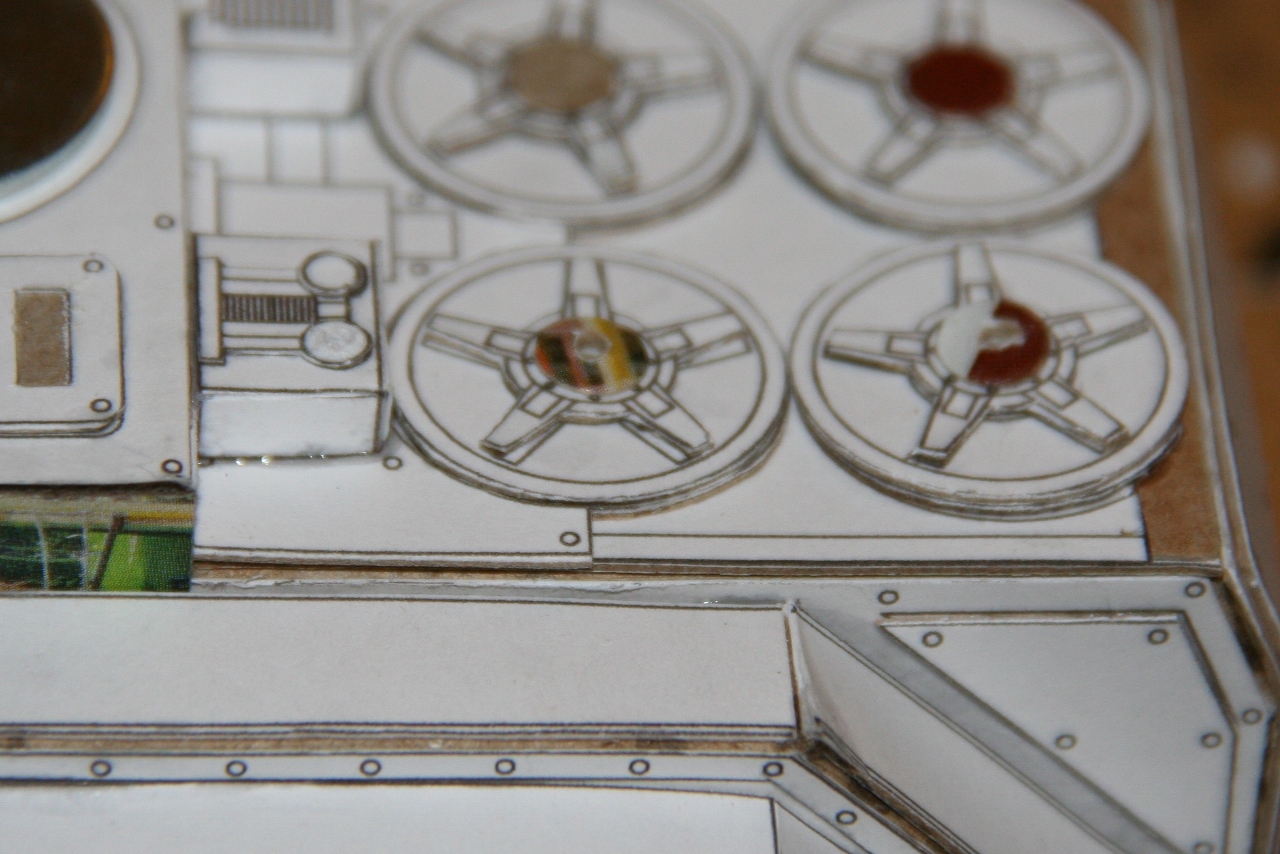
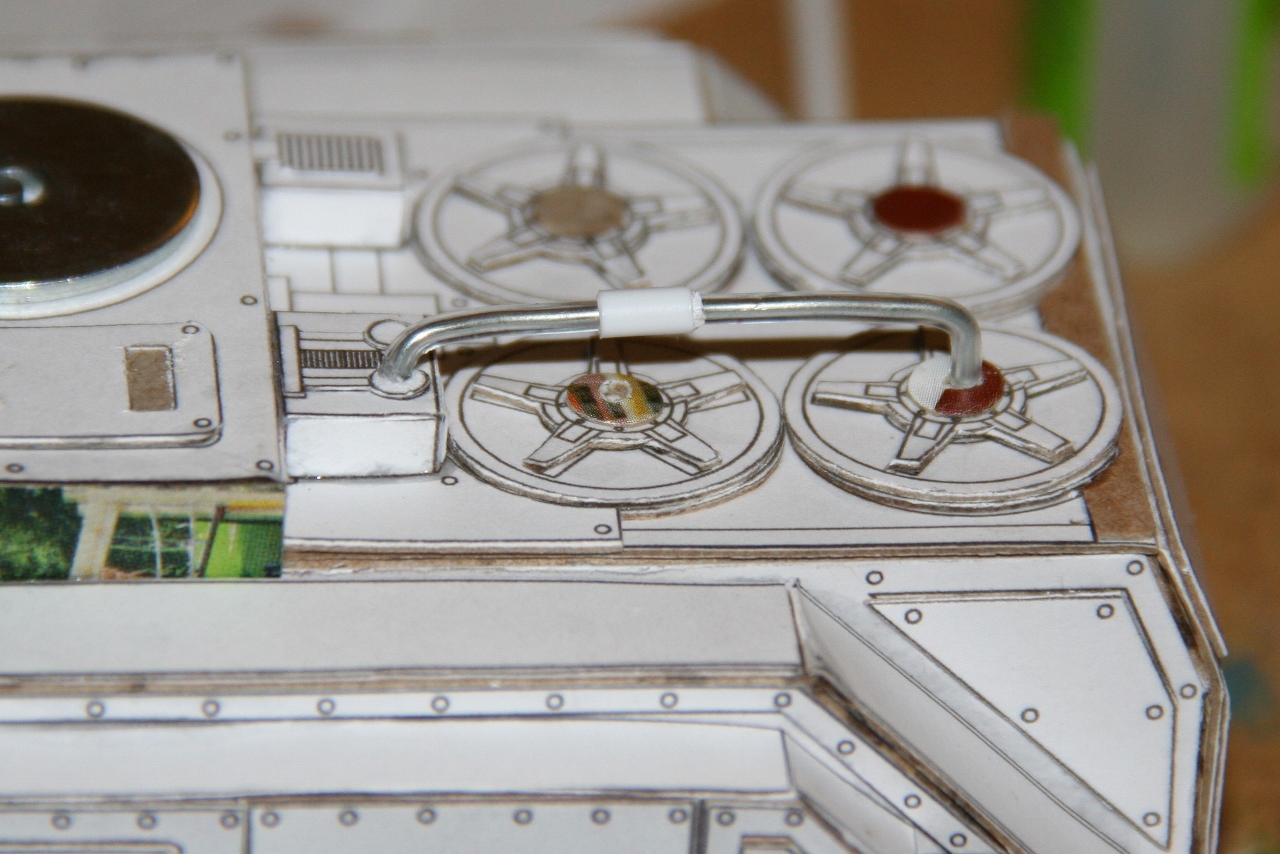
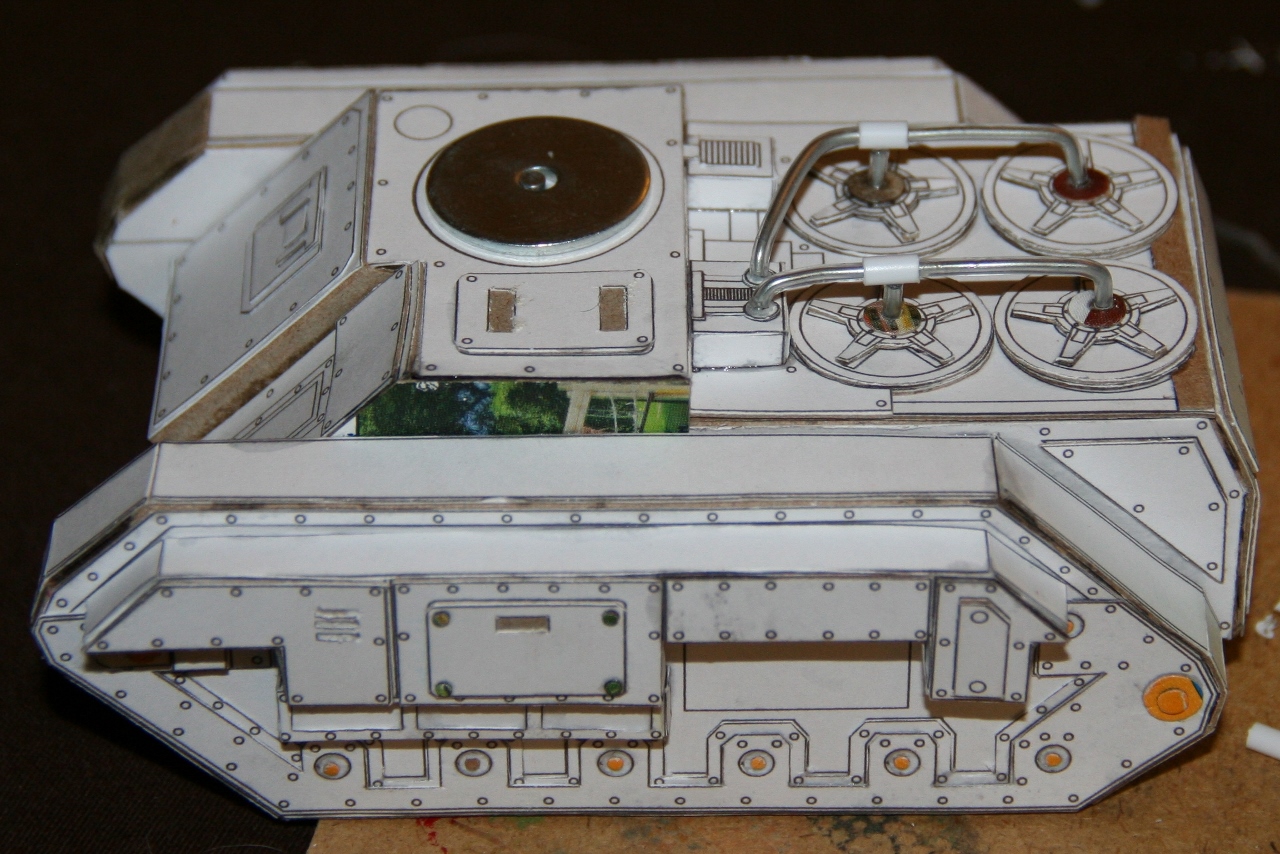
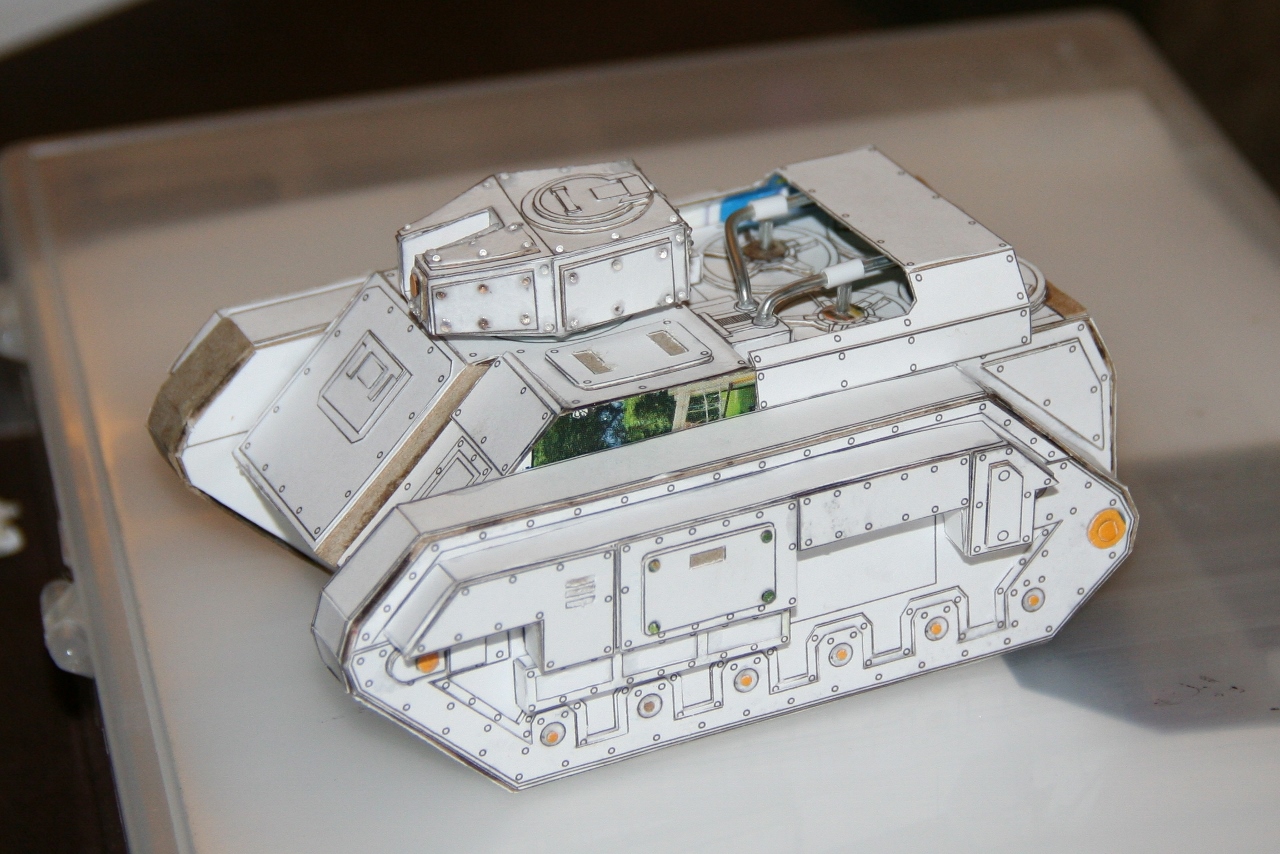
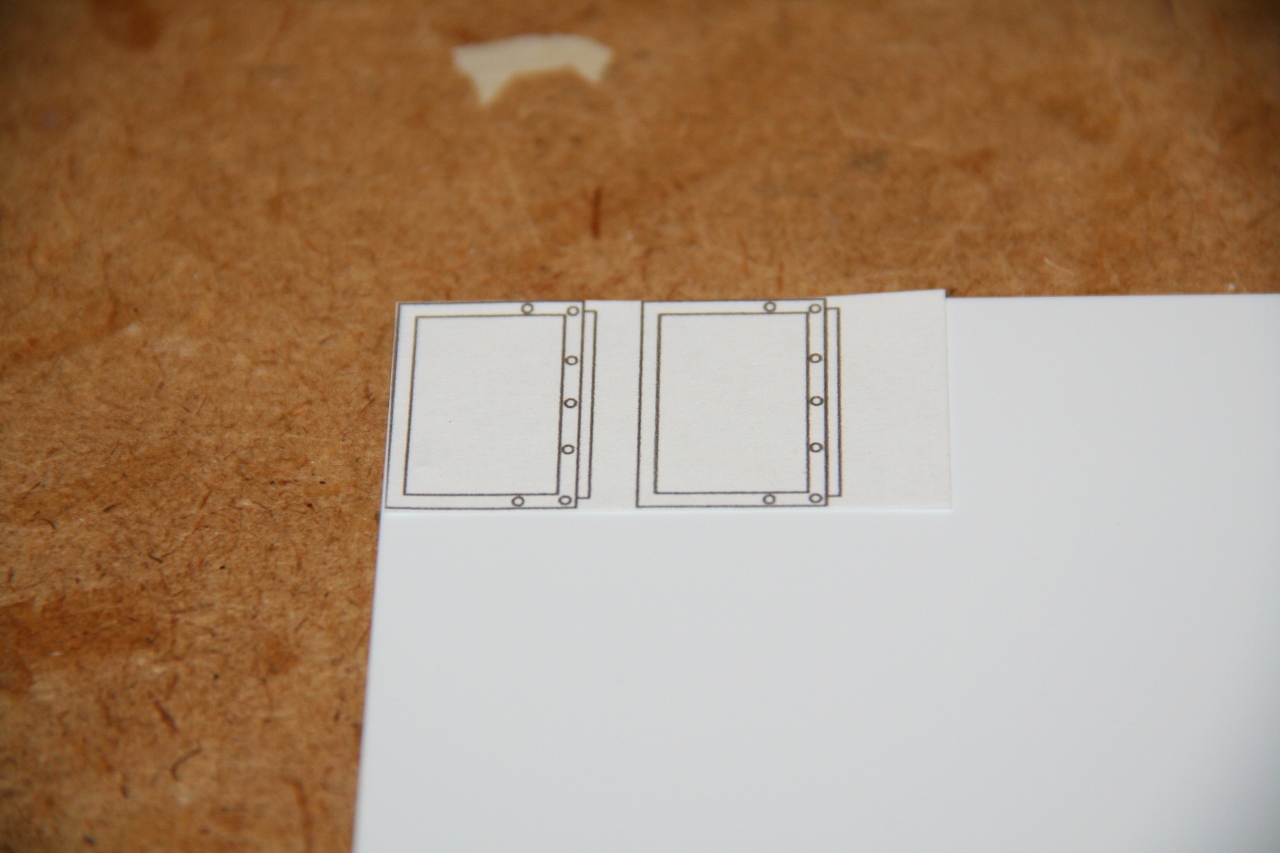
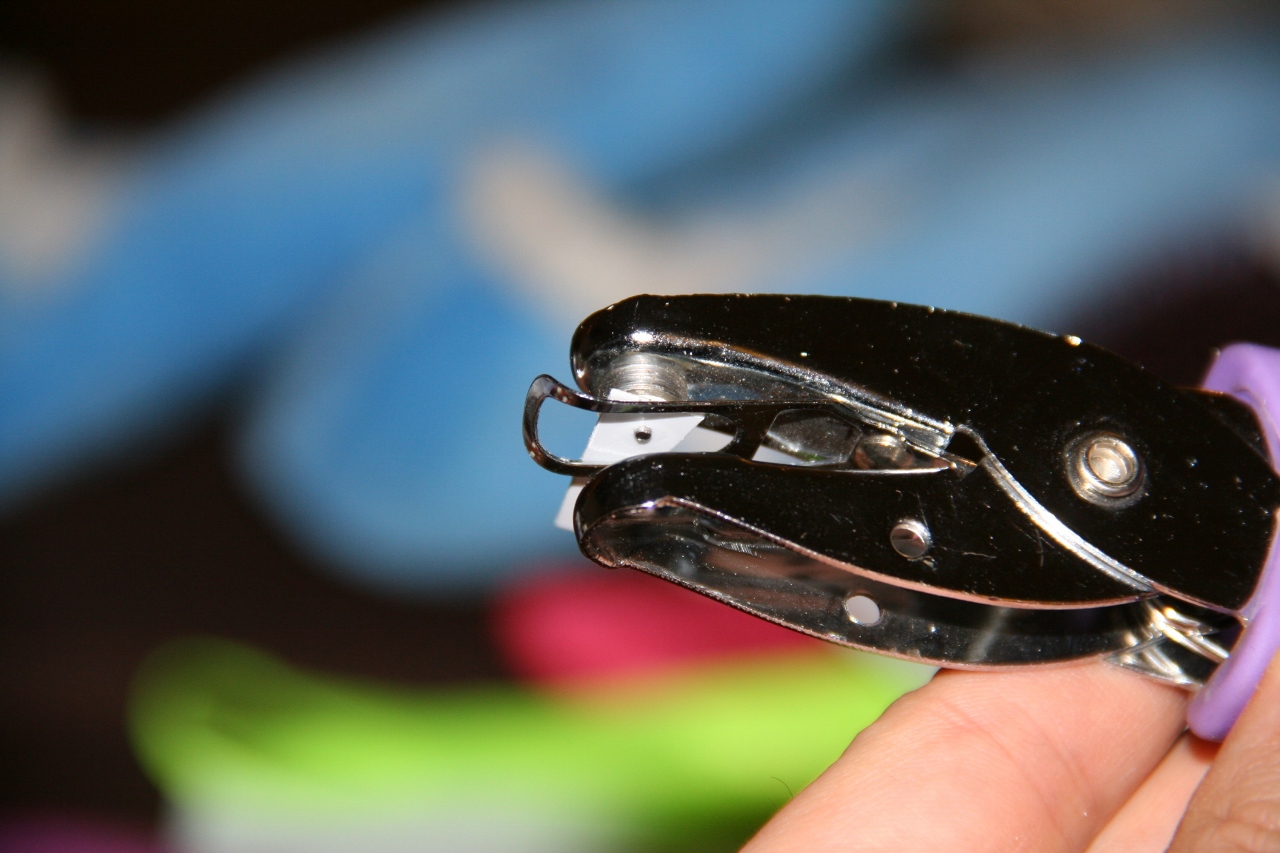
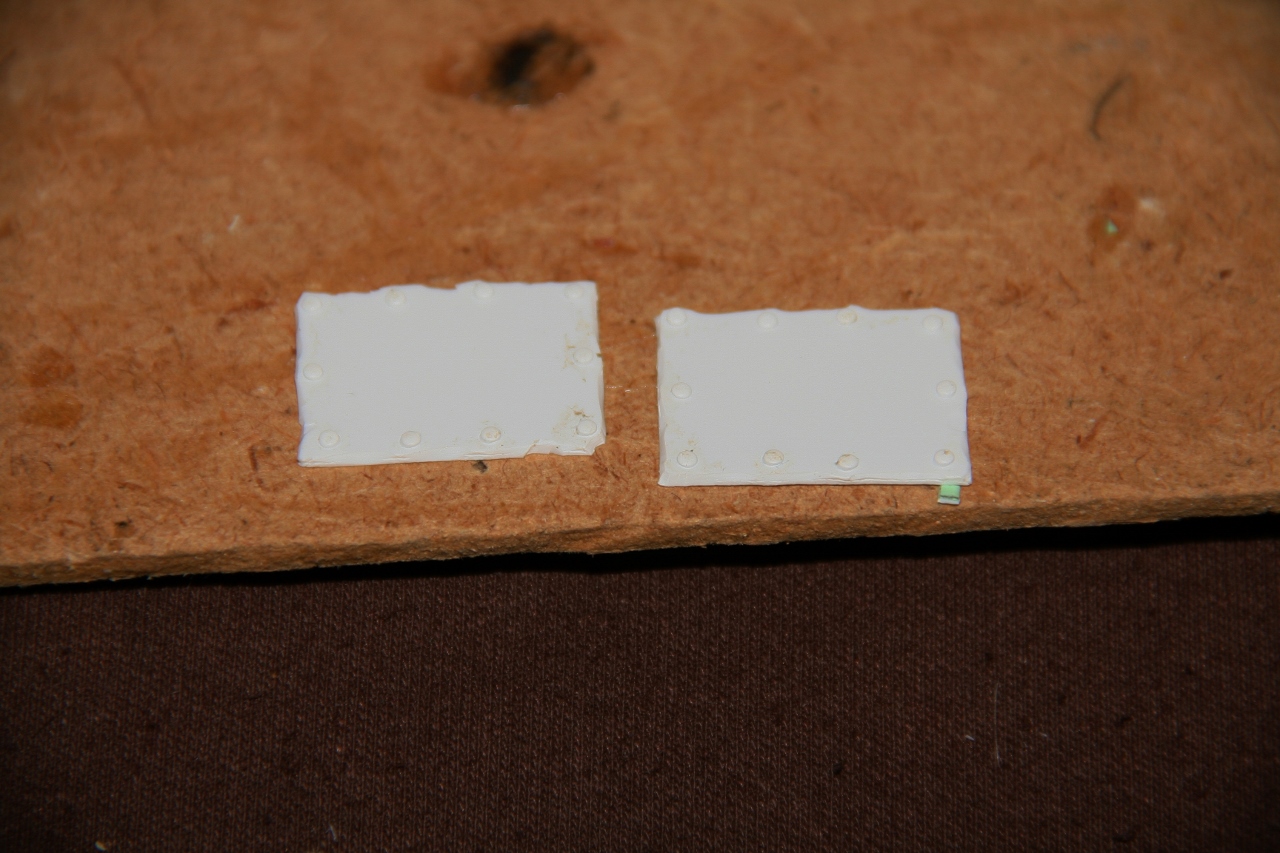
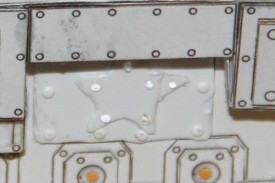
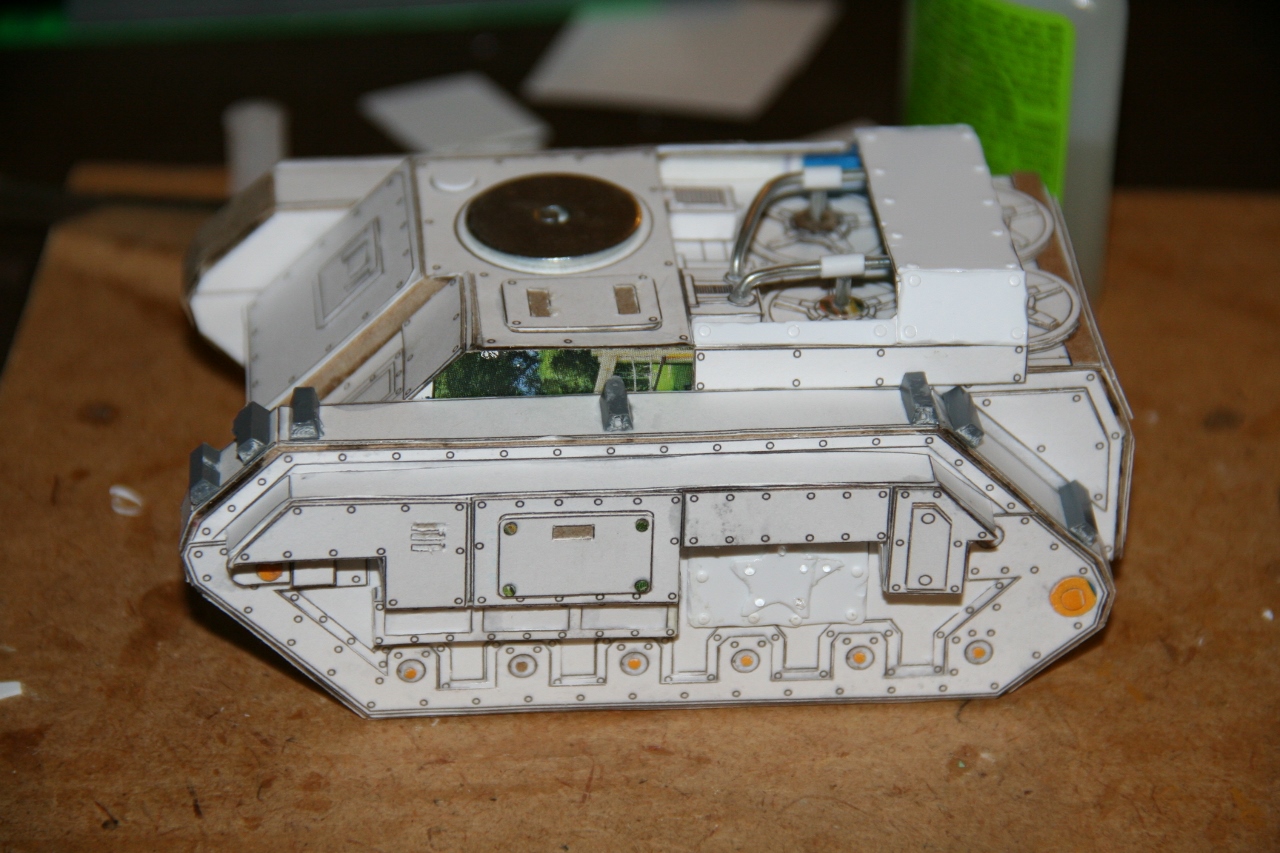
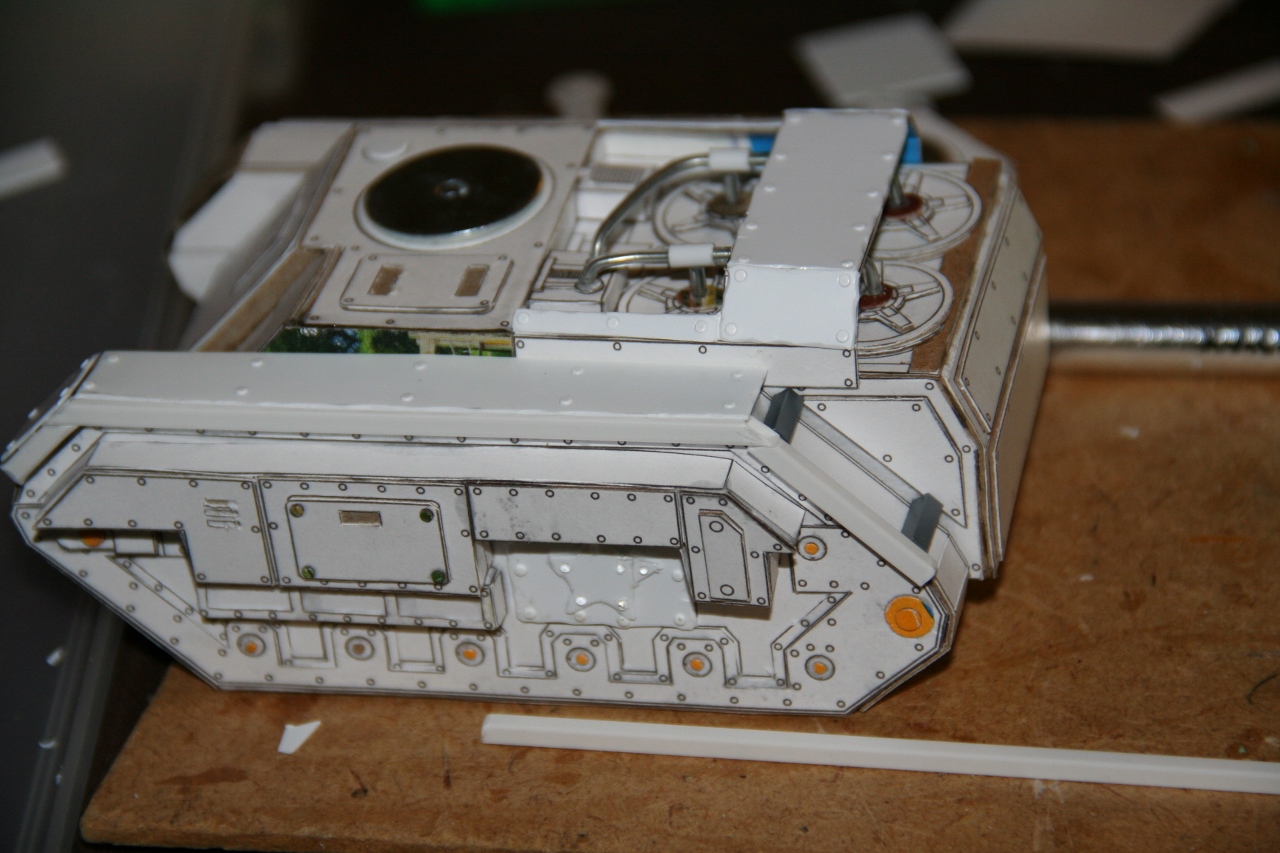
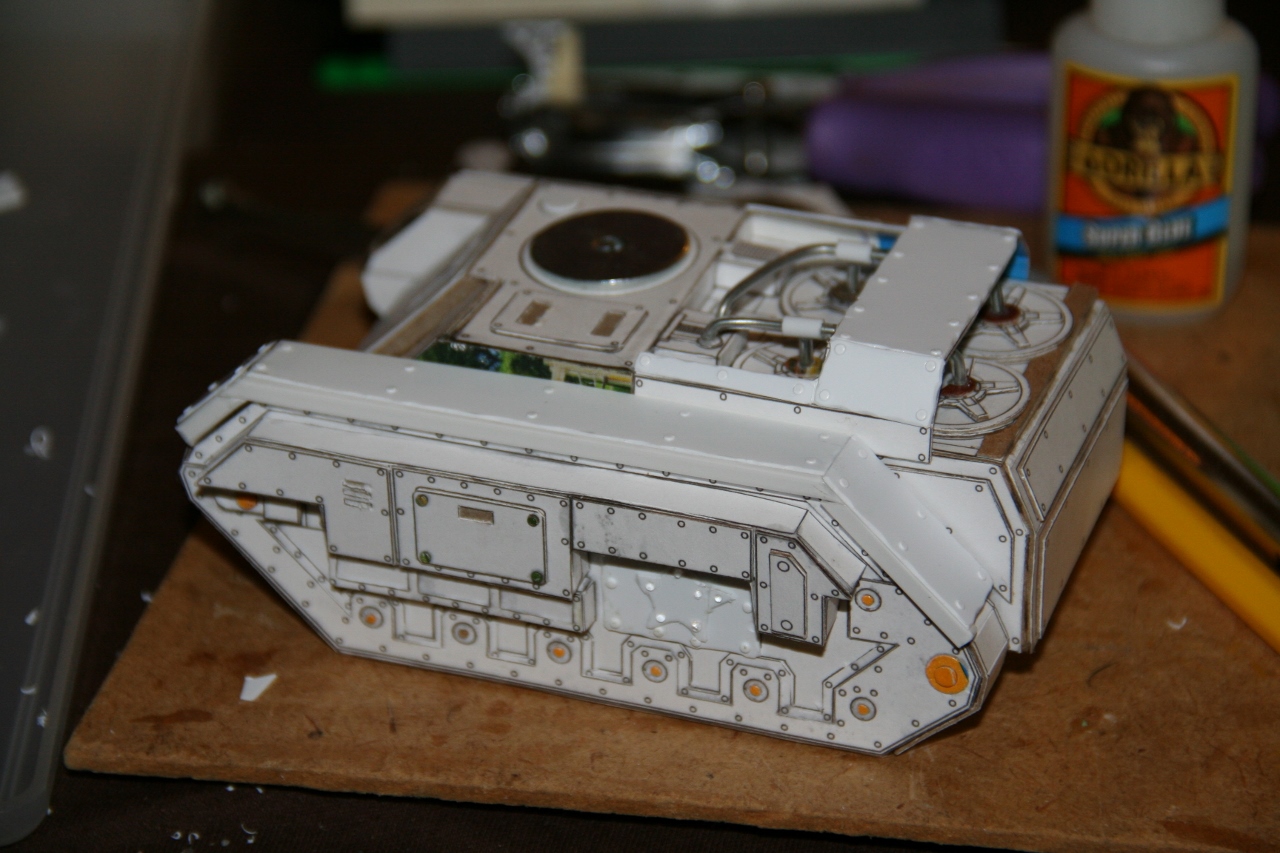
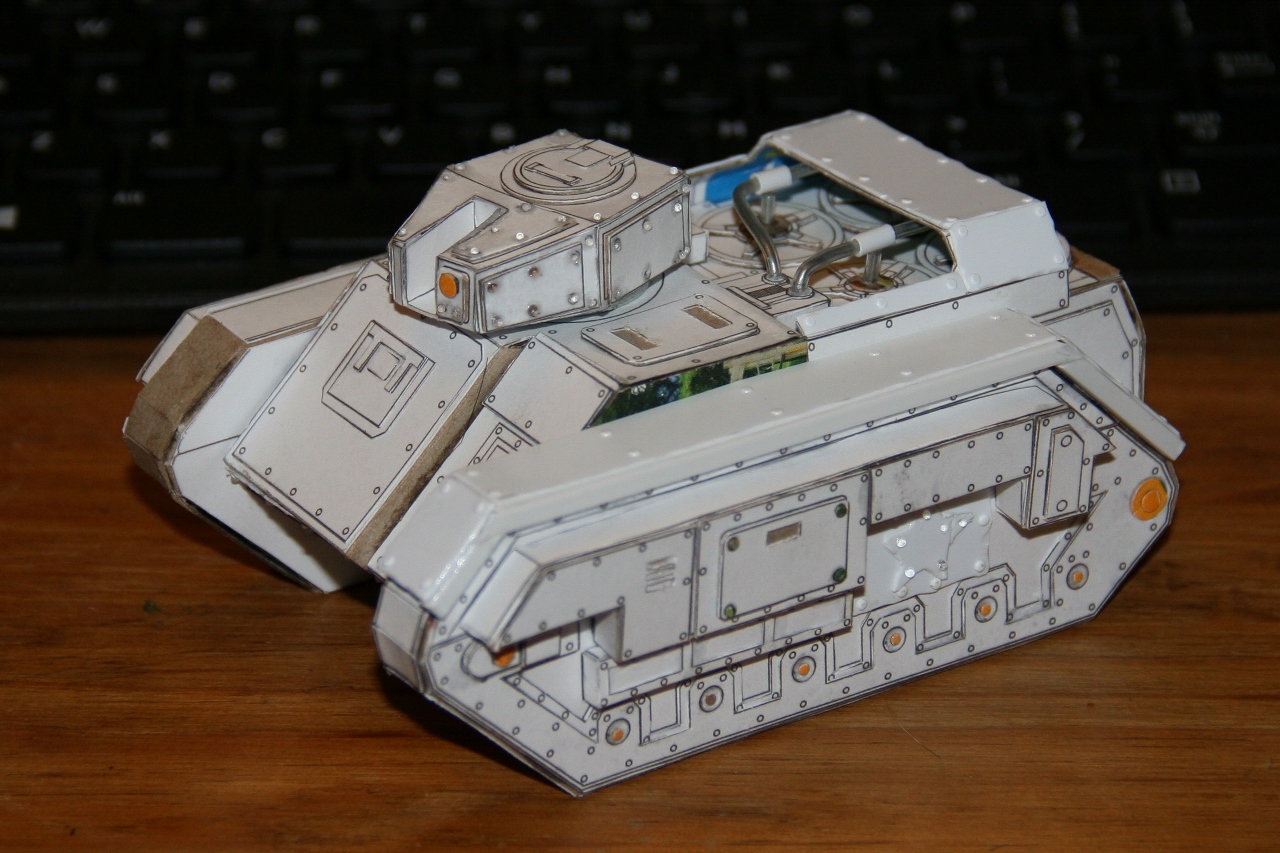
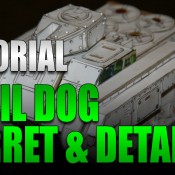
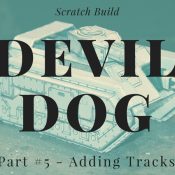
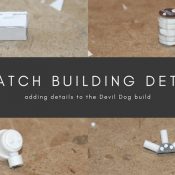
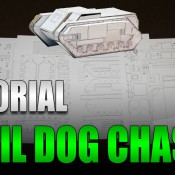
Awesome job! It’s really cool to follow the progress on this and see just what you can do with that template and some extra work.
Thanks! I’ve had a lot of fun experimenting with the templates and I wanted to share what I’ve figured out so far.
You have me very tempted to try this out when I decide I need a 3rd Rhino.
You should! You’ve probably got enough bits sitting around by now that you could fill out a lot of details that way.
All these little details are what really bring it to life.
The little details do make a big difference, and they’re my favorite part to work on.